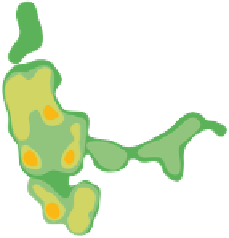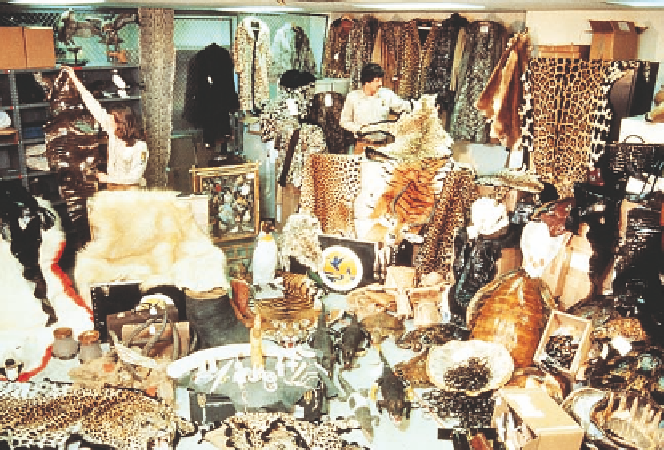Environmental Engineering Reference
In-Depth Information
2
Top Six Hot Spots
1 Hawaii
2 San Francisco Bay area
3 Southern Appalachians
4 Death Valley
5 Southern California
6 Florida Panhandle
4
3
5
6
Concentration of rare species
1
Low
Moderate
High
Figure 9-17
Threatened natural capital:
biodiversity hot spots in the United States. The shaded areas con-
tain the largest concentrations of rare and potentially endangered species. (Data from State Natural Heritage
Programs, the Nature Conservancy, and Association for Biodiversity Information)
a plan to help the species recover. By 2004, only one-
fourth of the species on the endangered and threat-
ened list had active plans. Most of the other plans
existed only on paper, mostly because of political op-
position and limited funds.
In 1982, Congress amended the ESA to allow the
secretary of the interior to use
habitat conservation plans
(HCP).
They are designed to strike a com-
promise between the interests of private
landowners and those of endangered and
threatened species, with the goal of not
reducing the recovery chances of a pro-
tected species.
With an HCP, landowners, develop-
ers, or loggers are allowed to destroy
some critical habitat in exchange for tak-
ing steps to protect members of the
species. Such measures might include
setting aside a part of the species' habitat
as a protected area, paying to relocate the
species to another suitable habitat, or
paying money to have the government
buy suitable habitat elsewhere. Once the
plan is approved it cannot be changed,
even if new data show that the plan is in-
adequate to protect a species and help it
recover.
Concern is growing that many of the
plans may have been approved without
enough scientific evaluation of their ef-
fects on a species' recovery. Also, many
plans represent political compromises that do not pro-
tect the species or make inadequate provisions for its
recovery.
The ESA also requires that all commercial ship-
ments of wildlife and wildlife products enter or leave
the country through one of nine designated ports. Few
illegal shipments are confiscated (Figure 9-18) because
Figure 9-18
Natural capital degradation:
confiscated products made from endan-
gered species. Because of a scarcity of funds and inspectors, probably no more than
one-tenth of the illegal wildlife trade in the United States is discovered. The situation is
even worse in most other countries.









































